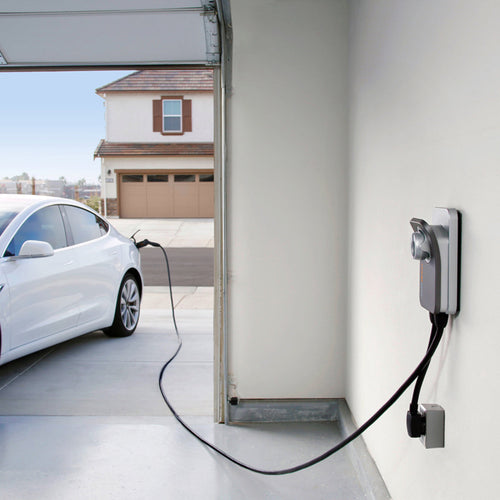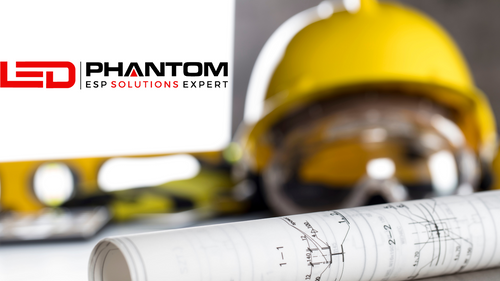Choosing the Right Bulb: Outdoor Light Bulbs & Understanding LED Phantom Glowing
Lighting decisions matter: they influence safety, efficiency, ambiance, and cost. Two topics that often confuse consumers are how to pick outdoor light bulbs and what “LED Phantom Glowing” means (especially relevant for LED Phantom’s lighting lines). In this guide, we’ll dive deep into both: explain differences between indoor vs outdoor light bulbs, how to choose the right outdoor bulbs, and what LED Phantom Glowing brings to the table (including troubleshooting tips). This helps you make informed, lasting lighting choices.
Indoor vs. Outdoor Light Bulbs: The Key Differences
One of the first mistakes many make is using indoor-rated bulbs outdoors. According to LED Phantom’s own guide, a bulb’s rating (UL, IP, wet/damp/dry) is crucial because it determines whether it can handle moisture, temperature changes, and exposure.
Here are the primary differences:
-
Environmental Resistance: Outdoor light bulbs are built to resist rain, snow, UV, and temperature swings. Indoor bulbs usually are not.
-
Safety Ratings: Outdoor bulbs often carry UL or similar wet/damp location ratings; indoor ones are for dry settings. Using indoor bulbs outdoors can lead to premature failure or hazards.
-
Material and Housing: Outdoor fixtures (and bulbs) have more durable casings, weather-sealed sockets, better insulation. Indoor light bulbs might have decorative glass or materials that degrade outdoors.
-
Performance in Cold/Heat: Outdoor bulbs must function in colder temperatures. Some indoor bulbs (especially certain CFLs) fail or flicker outdoors in cold weather.
What to Look for When Choosing Outdoor Light Bulbs
When shopping for outdoor light bulbs, don’t just pick based on wattage or style. Here's a checklist of important specs:
-
UL / ETL / Certification: If it says “wet location” or “damp location”, that tells you it’s designed for outdoor exposure. For fully exposed installations (e.g. exposed to rain), go for wet-location rated.
-
IP Rating: Ingress Protection. A rating like IP65 or IP66 is good for resisting dust and water jets.
-
Color Temperature (CCT): Outdoor areas benefit from cooler light (around 4000-5000 K) for safety and visibility; warmer tones might be used for patios or aesthetic lighting.
-
Lumens Over Wattage: Rather than wattage (energy draw), judge brightness by lumens. Need more brightness for driveways/security; less for path lighting or mood lighting.
-
Durability & Material: Aluminum, weather-sealed sockets, UV resistant plastics, corrosion-resistant coatings.
-
Energy Efficiency & Lifespan: LEDs generally win here—lower power usage, longer life.
-
Smart Features / Controls: Motion sensors, timers, dusk-to-dawn sensors, dimmers can add convenience and savings.
Understanding Ratings & Specs: UL, IP, Color Temp, Lumens
To choose well, you need to understand what the specifications on the box or product page mean:
-
UL Rating (Wet / Damp / Dry):
-
Dry → for indoor dry places only
-
Damp → covered outdoor or places with humidity but no direct exposure to water
-
Wet → full exposure to water
-
IP Rating: Two digits. First digit for solids (dust etc.), second for liquids. For outdoor bulbs, IP65 or above is often preferred.
-
Color Temperature (CCT): Expressed in Kelvin (K). Lower (2700-3000K) = warm/yellow; 4000-5000K = neutral to cool white; above ~5000K can appear bluish.
-
Lumens: Light output. For outdoor uses (security, pathway, yard) you’ll need higher lumens than for indoor accent lighting.
-
Voltage / Power Compatibility: Some fixtures outdoors require specific voltage or need 12V/24V or use solar powering.
Types of Light Bulbs for Outdoors: LED, Incandescent, Halogen, CFL
Here’s how different technologies compare for outdoor use:
|
Technology |
Pros |
Cons |
|
LED |
High efficiency, long life, wide range of CCT, many outdoor-rated options, low maintenance |
Higher upfront cost; some cheap LEDs have poor color rendering or build quality |
|
Incandescent |
Warm light, cheap initially |
Short life, high energy consumption, not durable in outdoor exposed settings |
|
Halogen |
Bright, crisp white light |
High heat output; still inefficient compared to LED; shorter lifespan |
|
CFL (Compact Fluorescent) |
Moderate efficiency, more affordable than LED in some cases |
Contains mercury; cold weather performance can suffer; slower start up in cold conditions |
LED is usually the best choice outdoors when you consider energy, durability, and value over time.
LED Phantom Glowing: What It Is & What Sets It Apart
What is LED Phantom Glowing? LED Phantom refers to a style/design where fixtures (or lighting surfaces) have a glow effect where the light appears diffused, smooth, and seamlessly integrated into the structure (walls, ceilings, corners) often when on—and sometimes nearly invisible or subtle when off. It’s both an aesthetic and functional feature.
Features & Benefits
-
Smooth, ambient glow without harsh edges or glare.
-
Creates architectural appeal (walls, ceilings, coves, accent zones).
-
Combines discreet design (when off) with strong illumination (when on).
-
Energy efficiency typical of LED tech; low heat, long lifespan.
Use Cases
-
In hallways, corridors—provides guiding light without glare.
-
Accent lighting for walls, ceilings, signage and decorative features.
-
Outdoor architecture—LED Phantom Glowing fixtures used in building façade lighting to highlight features without overpowering surroundings.
Troubleshooting & Maintenance Tips for LED Phantom Glowing Lights
Even high-quality systems can show issues. LED Phantom Glowing fixtures have specific care and troubleshooting patterns. LED Phantom’s blog gives good guidance.
Common Issues & Solutions
|
Issue |
Possible Cause |
Fix / Maintenance Tip |
|
Flickering or blinking |
Poor driver, bad power supply, or voltage drops |
Use quality drivers, check wiring, ensure stable power |
|
Dim glow or reduced brightness |
Dirt, dust, aging LEDs, or thermal throttling |
Clean fixtures, ensure proper ventilation, replace aged units |
|
Color temperature drift |
Cheap LEDs or inadequate phosphor mix |
Choose fixtures with better color rendering & stable LED chips |
|
Moisture ingress |
Poor sealing, wrong IP rating |
Use wet-rated fixtures, check seals, avoid installing under direct exposure without protection |
|
Uneven glow or hot spots |
Poor diffusion panel or incorrect installation angle |
Choose good diffusers or optical panels; angle and mounting can help |
Maintenance Best Practices
-
Regular cleaning of lenses and diffusers
-
Inspect seals and junctions for water ingress
-
Replace drivers or components proactively, before complete failure
-
Monitor for flicker, color shift, or decreased brightness
Buying & Installation Best Practices
-
Always match bulb type with the fixture: fixture housing, socket type, voltage.
-
Ensure correct UL / IP rating for the installation location.
-
Choose color temperature that suits the function: safety, ambiance, visibility.
-
Use dimmers, motion sensors, timers outdoors to reduce energy waste.
-
Install with proper orientation (e.g. downward fixtures to avoid light pollution)
Energy, Safety & Design Considerations
-
Energy Savings: LEDs drastically reduce power draw; LED Phantom fixtures help because of good design and diffusion.
-
Safety: Using the correct type of outdoor-rated bulb prevents hazards (water, moisture, electrical issues).
-
Design & Aesthetics: LED Phantom Glowing gives modern, elegant visual appeal—helpful in architecture, hospitality, premium real estate.
Also, consider light pollution / glare, especially in outdoor settings: aim lights, shield them, avoid over-bright installations.
Conclusion
Choosing the right outdoor light bulb is about more than just brightness. It’s about matching durability, safety, design, and performance. When you include modern aesthetic options like LED Phantom Glowing—which provide ambient, seamless lighting combined with strong LED performance—you get both beauty and functionality.
Whether replacing an outdoor bulb, choosing lighting for a new project, or maintaining existing lights, keep in mind UL/IP ratings, color temperature, lumens, and the specific demands of your environment. Combine those with maintenance and installation best practices, and you’ll have lighting solutions that are reliable, efficient, and visually stunning.


